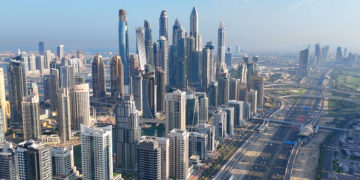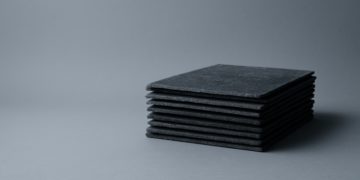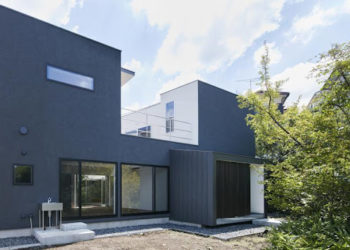Homeownership today is no longer just about the interior of a house. Increasingly, property value and livability are being redefined by what lies beyond the four walls—specifically, in the outdoor spaces we inhabit and shape. Gone are the days when a manicured lawn and a few flowering shrubs sufficed. Modern residential landscaping now integrates sustainability, function, and personal expression in creative ways that serve more than aesthetics.
The Rise of Purpose-Driven Landscaping
The best outdoor designs do more than look good—they work hard. Purpose-driven landscaping focuses on creating usable, multifunctional spaces. Whether it’s a quiet retreat for meditation, a family gathering zone, or a child-friendly play area, the landscape becomes a living, breathing extension of the home.
At the heart of this approach lies strategic planning. It means rethinking space usage: building terraces on sloped yards, segmenting zones for relaxation and activity, and optimizing flow with paths that naturally guide movement. Landscaping isn’t just about visual appeal; it’s about enhancing how we experience and interact with our outdoor environments.
K-ler Landworks continues to support this transformation by helping homeowners craft spaces that balance form and function. Their work in integrating structural elements like retaining walls demonstrates how modern landscaping merges engineering with design principles.
Retaining Walls: Where Utility Meets Design
Often overlooked as merely structural necessities, retaining walls have evolved into signature features in modern landscaping. These vertical supports are no longer just practical tools for managing slopes—they are design statements that influence elevation, movement, and visibility.
Built from stone, brick, wood, or concrete, retaining walls are versatile tools for reshaping uneven terrain. They prevent soil erosion, manage water runoff, and create leveled areas where patios, gardens, or seating can thrive. Thoughtful incorporation of lighting, seating edges, or cascading plant beds along the wall can transform it into a focal point that enhances the outdoor atmosphere.
The placement and orientation of a retaining wall also contribute to its impact. For example, a curved wall invites motion and softens the rigidity of hardscapes. Tiered walls, on the other hand, introduce dimensionality—ideal for integrating vertical gardening in tight spaces.
Landscaping as a Response to Climate and Ecology
There’s a growing awareness that outdoor design cannot ignore environmental conditions. Landscaping has become a proactive tool in climate responsiveness. This includes the selection of drought-tolerant plants, native species that require less maintenance, and eco-conscious irrigation practices.
Instead of turf-heavy designs, many homeowners are now turning to xeriscaping—a landscaping philosophy that reduces the need for supplemental water. Ground cover plants, gravel pathways, and mulch layers help retain moisture and reduce weeds. Not only is this approach more sustainable, but it’s also more resilient against changing weather patterns.
Planting trees strategically can also impact microclimates. Proper shade placement lowers cooling costs in summer months, while deciduous trees allow for sun exposure in winter. Well-designed landscaping can function as natural insulation for a home—proof that smart exterior planning contributes to energy efficiency indoors.
The Art of Layering and Texture
Modern landscaping thrives on complexity—not in maintenance, but in visual and spatial depth. Layering various elements creates interest and rhythm. Consider the interplay between hardscape and softscape: wood decks paired with soft moss ground covers, or stone pathways woven through vibrant flower beds.
Texture plays a critical role as well. Smooth pebbles, rugged bark, soft ornamental grasses, and glossy-leafed plants create sensory contrast. Even materials used for borders and containers influence the tactile experience of a yard.
Layering doesn’t only refer to horizontal layouts. Vertical gardens, climbing vines on trellises, and tall grasses used as privacy screens all expand how space is used visually and practically. This approach adds intimacy without walls and enhances enclosure without feeling boxed in.
Seasonal Design and Adaptive Use
Another emerging trend in landscaping is seasonal adaptability. A well-planned yard offers year-round beauty and functionality. Spring may bloom with color, summer with shade and relaxation, fall with warm tones and foliage, and winter with evergreens and architectural elements.
Adaptive design also ensures that outdoor spaces evolve with changing needs. For example, what begins as a child’s play zone may transition into a vegetable garden or outdoor kitchen later. Modular furniture, movable planters, and flexible lighting solutions make it easier to adapt without a full redesign.
Integrating fire pits, water features, or covered pergolas can extend outdoor usage through variable weather. These additions are more than luxuries—they enable homeowners to maximize time spent outside and connect more frequently with their own surroundings.
Materials that Ground the Space
In any outdoor project, material selection is key. Natural materials like stone and wood lend authenticity, grounding the space and helping it blend seamlessly with the environment. Meanwhile, composite and manufactured materials offer durability and consistency.
Retaining walls in particular benefit from careful material choice. A concrete wall may provide industrial appeal, while natural stone offers a rustic touch. The selected textures and tones should complement nearby architectural features and plant selections.
Incorporating recycled or locally sourced materials also aligns with environmentally responsible design. These choices not only reduce the carbon footprint but also promote regional harmony in design—a subtle but powerful element in cohesive landscaping.
Landscaping for Community Connection
Landscaping doesn’t only impact individuals; it influences community spaces and neighbor relations. A well-maintained yard contributes to neighborhood aesthetics and can spark inspiration for others to invest in their own outdoor improvements.
Shared green spaces, visually appealing front yards, and open-view gardens foster a sense of openness and hospitality. Landscaping that respects privacy while inviting social interaction adds to a sense of place, grounding people in their environments and building stronger community ties.
Final Thoughts
Today’s landscaping is a layered, intentional, and innovative practice that merges beauty with functionality. It is no longer confined to planting and trimming—it involves ecological sensitivity, structural intelligence, and design foresight.
K-ler Landworks remains committed to helping property owners navigate this evolving landscape. Through strategic use of elements like retaining walls and climate-conscious plantings, they demonstrate that a well-designed yard is both an investment in property and a commitment to lifestyle.
As outdoor spaces continue to gain prominence in modern living, investing in thoughtful landscaping isn’t just about keeping up appearances—it’s about shaping a life that’s lived closer to nature, with purpose and creativity at its core.












































































